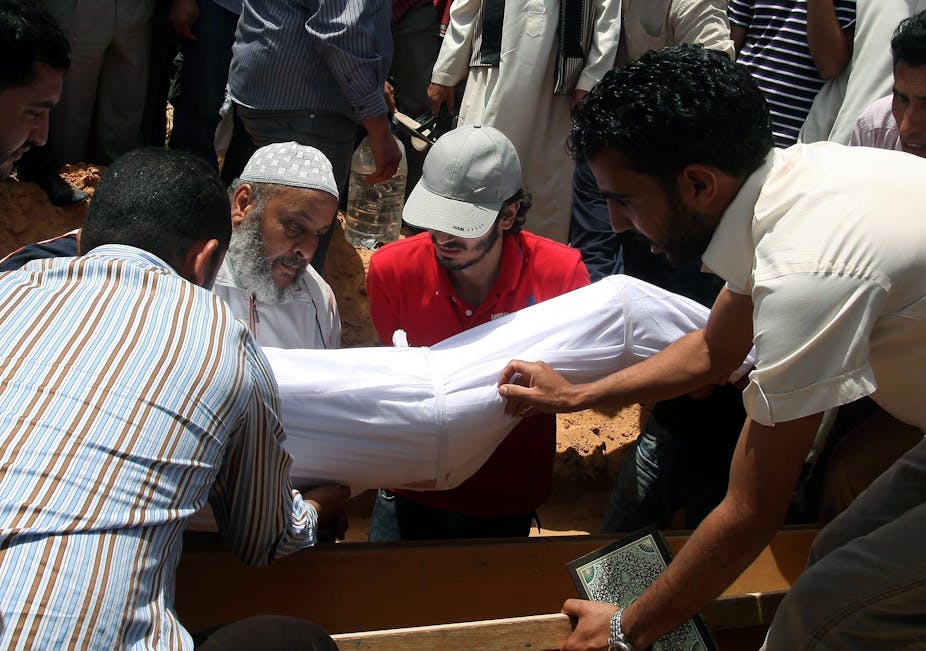At least one Lockerbie conspiracy theory has been laid to rest this week: that the only man convicted of the 1988 aircraft bombing was faking a terminal illness.
But the death of Abdelbaset al-Megrahi in Libya means that some of the truths behind the sabotage will never be known.
The former Libyan intelligence officer was convicted by a Scottish court in 2001 over the attack that killed 270 people that December evening. Another Libyan, Lamin Khalifah Fhimah, was acquitted. That left al-Megrahi alone carrying the can for what was obviously an act of terrorism that had involved many more perpetrators.
His release in 2009 on compassionate grounds was a political hand grenade. Suffering prostate cancer, the Libyan was allowed to fly home and be greeted as a hero. The law required that such a compassionate release was only available to prisoners who had less than three months to live. Allegations that his release was a political fix-up by the Blair government therefore gathered more weight the longer al-Megrahi went on living, with the assumption being that he had been let free in return for British access to Libyan oil.
This theory is nonsense and ignores the deep division of the time between Britain’s Labour Party and the Scottish National Party (SNP), as well as the latter’s obsession with winning Scotland’s independence. The criteria and precedent for releasing terminally ill prisoners was well established under Scottish law. Releasing al-Megrahi was going to be unpopular, but by doing so, the SNP made a bold statement to the world that Scotland was its own master with its own legal system and not some provincial puppet of London or in some other way beholden to outside influence.

The fact that the SNP and Labour were blood enemies and would battle to the death over the most trivial issues makes the idea of a shady deal between the two ludicrous. The conviction, and hence release, was carried out under Scottish law and could not have been manufactured in Whitehall.
That al-Megrahi knocked on for another three years after being set free is not proof of sinister dealings. Prostate cancer is not the deadliest of cancers and being liberated from a Scottish prison and returned to a warm climate and the bosom of one’s family will undoubtedly aid in remission. Anyone who doubts the sincerity of the medical case would have to demolish the evidence of a panel of doctors and lawyers who all knew that this case would be dynamite.
But that still leaves us with the problem of what really happened to bring down that fated Pan Am flight above Scotland.

The mercurial Colonel Gaddafi maintained until his sticky end that Libya was not responsible for the bombing. He agreed to pay compensation to the families as part of Libya’s temporary re-admission to the world community, but under the proviso that this wasn’t a formal admission of guilt.
But in late 2011, Gaddafi’s former Minister for Justice, Mustafa Abdul Jalil, claimed his former boss had personally ordered the bombing. To say that Jalil had a vested interest in making this assertion is an understatement. At the time he was trying to reinvent himself as the potential leader of a free Libya and establish his status as a truly reformed member of the ancién regime.
Who was responsible for the bomb aboard Pan Am 103 has never been satisfactorily determined. That the Libyans had a hand in it is likely, but they may have been the unwitting tools of another layer of state sponsorship. Many theories favour the Iranians or Syrians, perhaps themselves pulling the strings of a Palestinian group such as Abu Nidal. Even Apartheid South Africa and, naturally, the drug-smuggling CIA have been accused of orchestrating the bombing.

Motive is always the sticking point with Lockerbie theories. What was to gain from blowing up the aircraft? Killing Americans and Brits is one thing, but generally you want to get some publicity out of it. A few hitherto unknown Islamic radical groups claimed responsibility immediately afterwards, but then they always do. Iran probably had the most plausible motive for bringing down the airliner; as revenge for the Americans shooting down an Iran Air passenger jet a few months before.
The forensic investigation that led to the Libyans being accused has also been subject to criticism over the years, with allegations of framing and improper procedure. Given that al-Megrahi denied all allegations and gave no statement in his trial, the conviction was secured on forensic and circumstantial grounds alone. This evidence has been repeatedly challenged over the years and doubts cast upon the specific links between the explosive device and Libya, as well as the reliability of a key witness.
The families of the Lockerbie victims are unlikely to be caught up with al-Megrahi’s demise. Many of them were never satisfied by his conviction, with some being convinced he was totally innocent. Instead they have remained focused on demands for a more thorough investigation aimed at finding out the deeper truths.

So nearly 25 years on from the devastating explosion we are no closer to an answer. The main Libyan players are the subject of obituaries and the likelihood of any significant documentary evidence emerging from the current chaos of Tripoli is slim.
For most people these days, Lockerbie is a dwindling memory. The photograph of that neatly bisected cockpit section lying in a field is perhaps the most iconic image.
My own recollection is forever linked with watching Prince Charles on the TV news. He made a statement along the lines of what a terrible tragedy this was “especially coming so close to Christmas”.
As if there is a better time of year to be compressed into the Scottish landscape in a ball of blazing metal.

